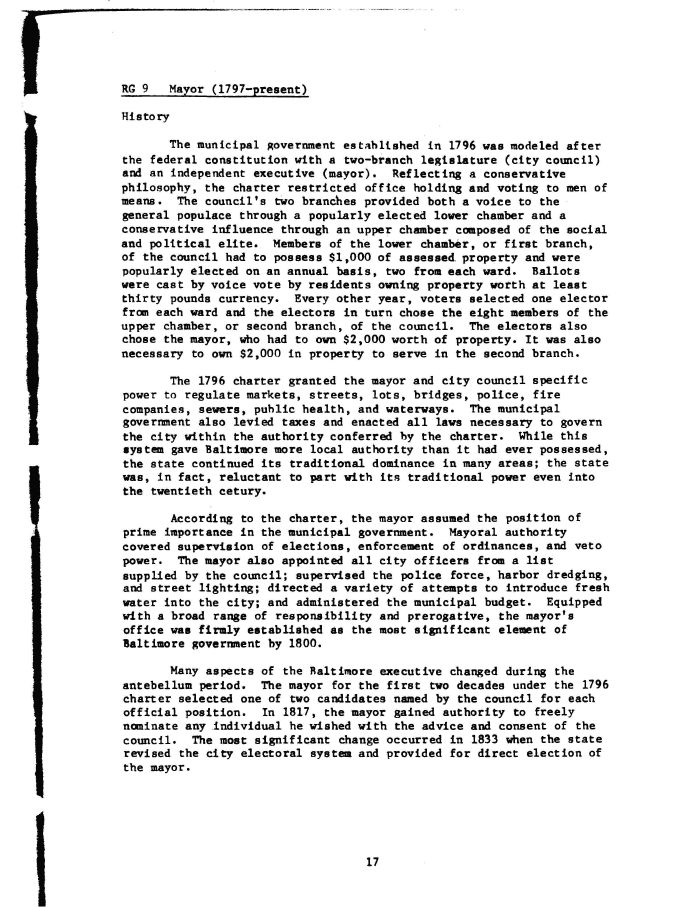|
RG 9 Mayor (1797-present)
History
The municipal government established in 1796 was modeled after
the federal constitution with a two-branch legislature (city council)
and an Independent executive (mayor). Reflecting a conservative
philosophy, the charter restricted office holding and voting to men of
means. The council's two branches provided both a voice to the
general populace through a popularly elected lower chamber and a
conservative Influence through an upper chamber composed of the social
and political elite. Members of the lower chamber, or first branch,
of the council had to possess $1,000 of assessed property and were
popularly elected on an annual basis, two from each ward. Ballots
were cast by voice vote by residents owning property worth at least
thirty pounds currency. Every other year, voters selected one elector
from each ward and the electors in turn chose the eight members of the
upper chamber, or second branch, of the council. The electors also
chose the mayor, who had to own $2,000 worth of property. It was also
necessary to own $2,000 in property to serve in the second branch.
The 1796 charter granted the mayor and city council specific
power to regulate markets, streets, lots, bridges, police, fire
companies, sewers, public health, and waterways. The municipal
government also levied taxes and enacted all laws necessary to govern
the city within the authority conferred by the charter. While this
system gave Baltimore more local authority than it had ever possessed,
the state continued its traditional dominance in many areas; the state
was, in fact, reluctant to part with its traditional power even into
the twentieth cetury.
According to the charter, the mayor assumed the position of
prime importance in the municipal government. Mayoral authority
covered supervision of elections, enforcement of ordinances, and veto
power. The mayor also appointed all city officers from a list
supplied by the council; supervised the police force, harbor dredging,
and street lighting; directed a variety of attempts to introduce fresh
water into the city; and administered the municipal budget. Equipped
with a broad range of responsibility and prerogative, the mayor's
office was firmly established as the most significant element of
Baltimore government by 1800.
Many aspects of the Baltimore executive changed during the
antebellum period. The mayor for the first two decades under the 1796
charter selected one of two candidates named by the council for each
official position. In 1817, the mayor gained authority to freely
nominate any individual he wished with the advice and consent of the
council. The most significant change occurred in 1833 when the state
revised the city electoral system and provided for direct election of
the mayor.
17
|

